Introduction: In this article, Gena Philibert-Ortega searches old newspapers to find recipes for the many varieties of ketchup that were familiar to our ancestors. Gena is a genealogist and author of the book “From the Family Kitchen.”
Ketchup. You probably have a bottle of the tomato-based condiment in your refrigerator right now. Most Americans consider it a must-have for hamburgers, hot dogs, and French fries – but what do you really know about this common everyday sauce? Your ancestors also thought it was essential, but chances are you wouldn’t recognize their version of ketchup/catsup. A look at historical newspapers reveals the reason why.
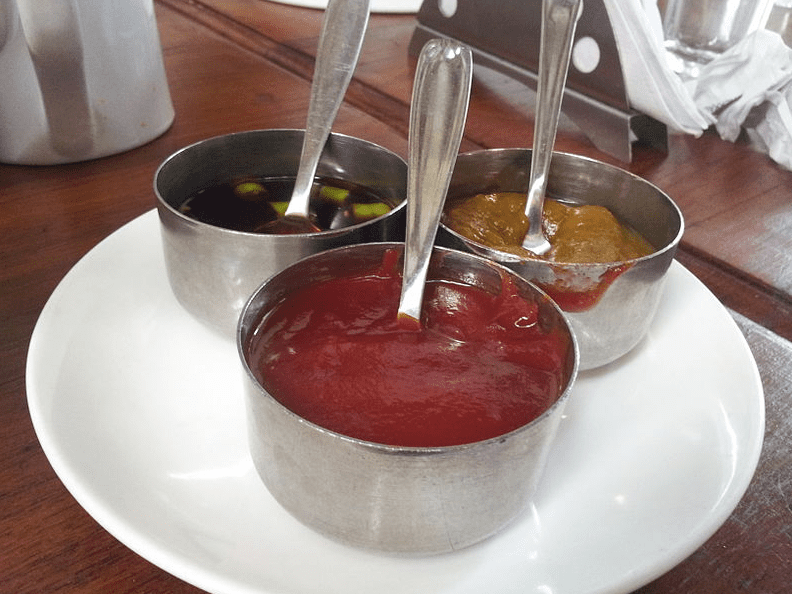
History of Ketchup
Let’s start our discussion with a look at the word itself: catsup versus ketchup. According to the Online Etymology Dictionary, the term “ketchup” dates back to 1711 and is:
“said to be from Malay (Austronesian) kichap, but probably not original to Malay. It might have come from Chinese koechiap, ‘brine of fish,’ which, if authentic, perhaps is from the Chinese community in northern Vietnam [Terrien de Lacouperie, in ‘Babylonian and Oriental Record,’ 1889, 1890]. Catsup (earlier catchup, 1680s) is a failed attempt at Englishing, still in use in U.S., influenced by cat and sup.”(1)
It’s possible that the English came across ketchup in their travels to Southeast Asia and then tried their hand at making the sauce around the 18th century.(2)
So, what about the name? Is it catsup or ketchup? In a search I did of GenealogyBank’s Historical Newspaper Archives, I found the use of the term “ketchup” around 1880, but the use of “catsup” can also be found from the 19th century to well into the 20th century. It is believed that the association of the word “ketchup” with the tomato-based condiment by Heinz and other food companies made the word eventually win out over “catsup.”(3)
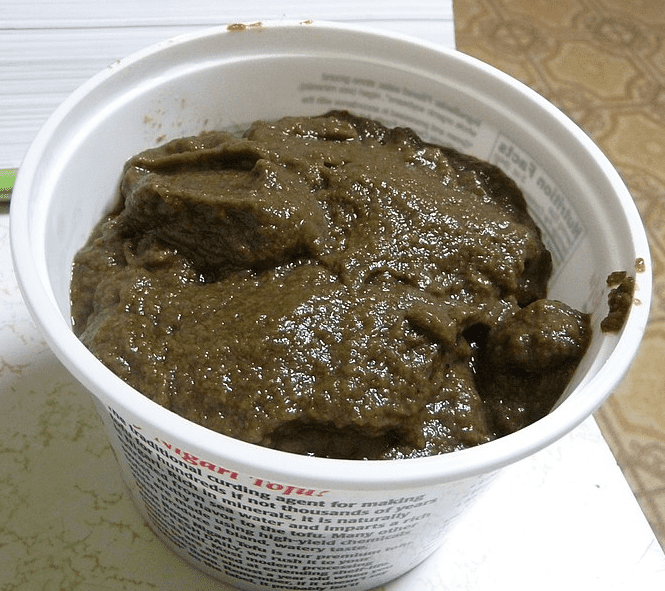
By now you’re probably wondering why I’ve referred to ketchup as a “tomato-based condiment.” After all, isn’t it obvious that ketchup is made from tomatoes? Well, maybe not so obvious: early catsup creations your ancestors were familiar with are nothing you’d recognize today.
I remember seeing my first 19th century ketchup recipe in one of my community cookbooks under the title Oyster Ketchup. Yes, early ketchups were made of all kinds of ingredients including mushrooms, walnuts, grapes, and yes, even oysters. Recipes and advertisements for these catsups can be found in historical cookbooks and newspapers. It’s probably helpful to think of these earlier creations as sauces for foods like meat, rather than something to dip foods into.

All the Flavors of Catsup
Today, when someone mentions the word “ketchup” everyone knows what that means. But for our ancestors, the word ketchup or catsup was typically qualified with what the main ingredient was. We all know tomato catsup, and I already mentioned that oysters, mushrooms, and grapes were also possible ingredients found in catsups. So, let’s look at some other catsups our ancestors would have been familiar with.
This 1900 gooseberry catsup recipe calls for eight pounds of the fruit and four pounds of brown sugar. It’s said to be able to “keep a long time” but the user would need to scald it occasionally and add vinegar and spices.
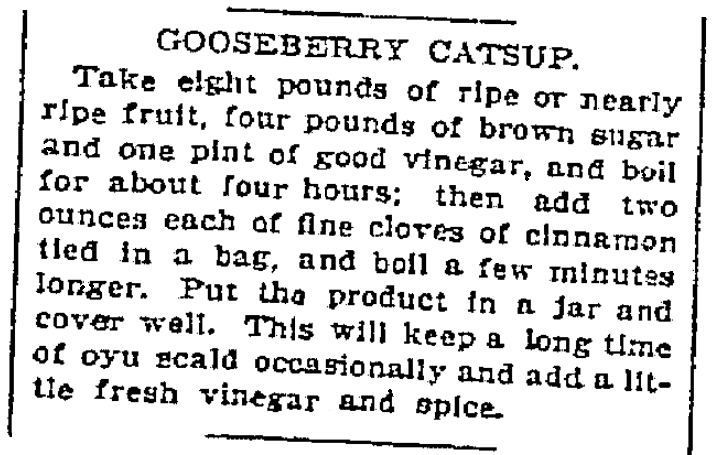
Another 1900 catsup recipe is this one for “cold catsup,” which most likely had a kick due to the addition of horseradish. Interestingly enough, the recipe states that it is absent of spices. It’s true it doesn’t include spices like ginger and mace – but it does include red peppers, grated horseradish, sugar, salt, onion, pepper and cider vinegar.
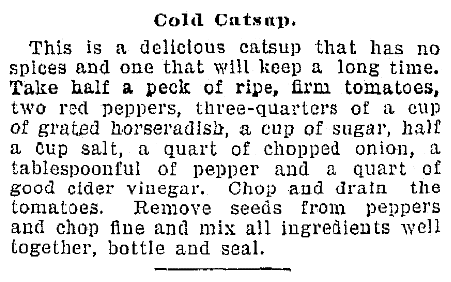
In case you want to try some anchovy catsup, here’s a 1917 recipe. In response to a reader’s question, the newspaper’s “Women’s Exchange” column provides a recipe that calls for ale, anchovies, shallots, mushroom catsup, sugar, ginger, mace, and cloves. Notice the recipe includes the addition of catsup as an ingredient: mushroom catsup.
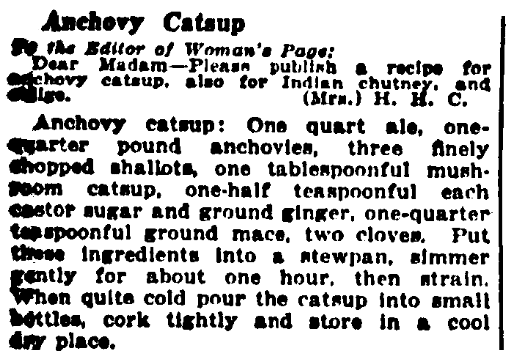
I have to throw in one more: celery catsup. Celery was much more popular in our ancestor’s time than it is now (in my opinion), and nothing proves that more than a recipe for celery catsup. Catsup was a sauce and, probably not surprisingly, this recipe recommends that this catsup be used on “boiled meats, beef steak, etc.”
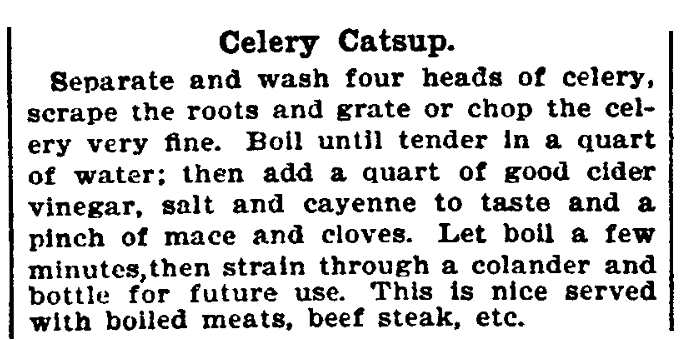
Tomato Ketchup
In the early 1800s tomatoes become an ingredient in ketchup in the United States. But there was a problem. Ketchup normally had a year-long storage life, but tomato pulp (which was often used) was more difficult to preserve, and so those early tomato ketchups contained deadly chemicals to retain a red color and avoid spoilage.(4) Historical newspaper ads reflect the problems with early tomato-based catsup in their advertisements claiming their products were “pure.”
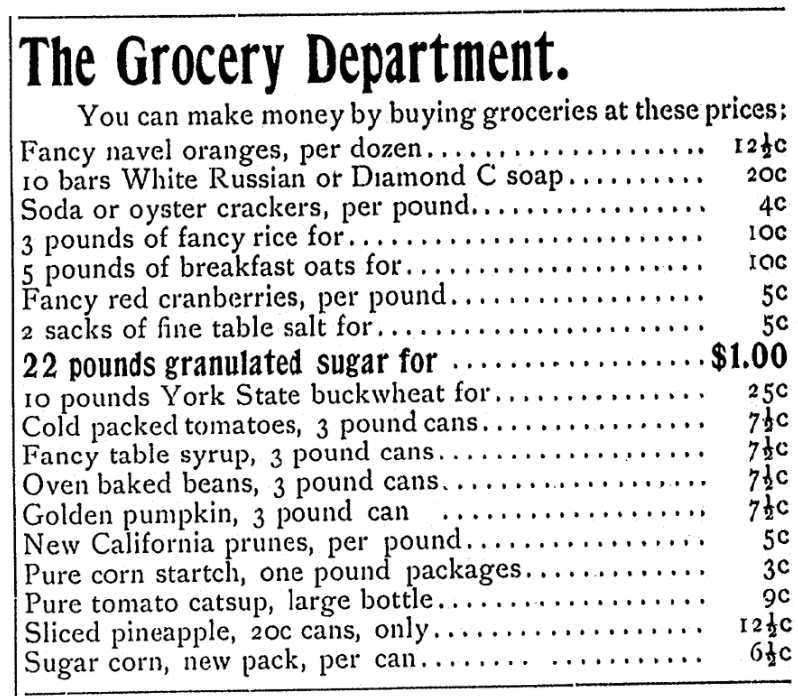
In an answer to those chemicals and contaminates that plagued early tomato-based ketchups, Henry J. Heinz started producing his ketchup in 1876 using ripe tomatoes, which naturally have pectin, and larger amounts of vinegar to avoid spoilage.(5)
Who Knew Ketchup Was So Interesting?
Today, when you hear the word “ketchup” you automatically assume it’s a thick, bright red sauce that’s great for dipping French fries. The catsups of our ancestors’ day were different, yet today are but a footnote in food history. And with the availability of ketchup, whether you purchase it at the grocery store or use it in tiny foil packets provided with fast foods, there’s no need to make your own – so we rarely if ever see recipes for the sauce in today’s cookbooks.
Do you have an old family cookbook? Does it contain catsup recipes? Please share them with us in the comments section below.
___________________
(1) “ketchup (n),” Online Etymology Dictionary (https://www.etymonline.com/word/ketchup: accessed 25 May 2018).
(2) “How was Ketchup Invented?” National Geographic (https://www.nationalgeographic.com/culture/article/how-was-ketchup-invented: accessed 25 May 2018).
(3) “Catsup vs Ketchup: What’s the Difference,” Writing Explained (https://writingexplained.org/catsup-vs-ketchup-difference: accessed 26 May 2018).
(4) “How was Ketchup Invented?” National Geographic (https://www.nationalgeographic.com/culture/article/how-was-ketchup-invented: accessed 25 May 2018).
(5) Ibid.
